On June 12, 2025, a panel session titled “Market Economic Reforms in Uzbekistan” was held in Geneva, Switzerland, within the framework of the 10th meeting of the Working Party on Uzbekistan’s accession to the World Trade Organization (WTO). The event was organized with the support of the WTO, the World Bank, and the IMF.
The main objective of the session was to present the key directions of Uzbekistan’s market reforms, discuss the challenges and opportunities associated with WTO accession, and review the country’s progress in improving its investment climate and macroeconomic performance.
During the event, Obid Khakimov, Director of the Center for Economic Research and Reforms (CERR), delivered a presentation on the outcomes of Uzbekistan’s socio-economic reforms undertaken between 2017 and 2024.
International experts praised the Uzbek government’s strong commitment to structural reforms, highlighting their profound impact on the country’s economic development in recent years.
In his presentation, the CERR Director emphasized that between 2017 and 2024, Uzbekistan achieved significant progress in ensuring macroeconomic stability. GDP per capita increased from $1,781 to $3,092, the unemployment rate dropped from 9.3% to 5.8%, and real household incomes grew by 83%. Inflation, despite external shocks, was maintained at 9.8%, which is below the Central Asian average of 16.7%.
He noted that capital investment tripled, reaching $39 billion. These funds were channeled into infrastructure modernization, energy, industry, and logistics. Special attention was paid to tackling the shadow economy through the introduction of digital cash registers, e-invoicing, and risk-based tax monitoring, its share was reduced from 45.1% to 34.8%.
As part of Uzbekistan’s strategy to strengthen the role of the private sector, the country aims to increase the private sector’s share of GDP to 85% by 2030 through privatization, public-private partnerships (PPPs), improved market competition, and enhanced investment attractiveness.
The presentation also highlighted structural shifts in the economy. The share of manufacturing in GDP rose from 14% to 20%, and industrial output more than doubled from $28 billion to $62 billion. These achievements were driven by industrial modernization, active export promotion policies, and the attraction of foreign direct investment (FDI) into industrial projects.
Special emphasis was placed on Uzbekistan’s improved performance in global rankings. According to the Harvard Growth Lab, Uzbekistan advanced 28 positions in the Economic Complexity Index over five years, reaching 70th out of 145 countries.
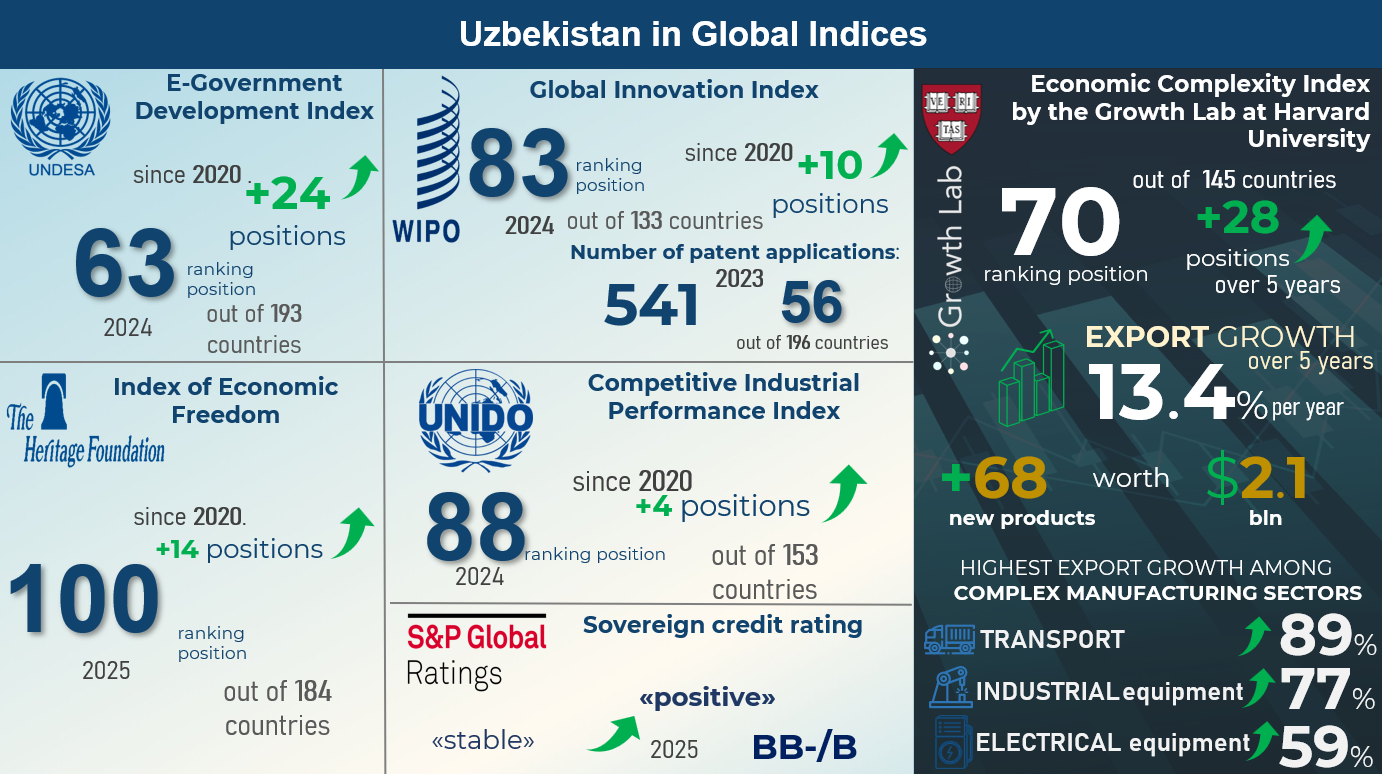
Expert explained that this index measures the diversity and technological sophistication of a country's export portfolio. Uzbekistan’s upward trajectory in the index reflects successful economic diversification, a rise in non-resource exports, and entry into new product niches. It is directly tied to the country’s long-term growth potential and signals ongoing structural transformation, industrial development, and reduced reliance on raw materials.
Uzbekistan has demonstrated stable export growth averaging 13.4% per year, with non-oil exports growing even faster at 17% exceeding global averages. Over the past 15 years, the country has added 68 new export products totaling $2.1 billion in value, with 8% of these already comprising a significant share of total exports. This reflects steady diversification.
Of particular note, 162 Uzbek export products currently hold a comparative advantage on global markets, demonstrating strong competitiveness. In terms of productive diversification, Uzbekistan ranks 46th among 145 countries outperforming many regional peers. This indicates the country’s growing capacity to produce a wide range of, including high-tech, goods.
According to projections by the Harvard Growth Lab, Uzbekistan is expected to become the world’s second-fastest growing economy by 2033, with an average annual GDP growth rate of 5.75%. This underscores that reforms in industrial policy and export support are laying a firm foundation for long-term sustainable growth.
Uzbekistan has also improved its standings in other international indices: it rose 14 positions to 100th in the Heritage Foundation’s Index of Economic Freedom; entered the "very high" category in the UN e-Government Development Index; and ranks 4th in the WIPO Global Innovation Index for South and Central Asia.
The speaker emphasized that since 2017, Uzbekistan has implemented a comprehensive policy of economic liberalization. Full convertibility of the national currency was ensured, the dual exchange rate was eliminated, and average import tariffs were reduced from 15.3% to 8%. Zero duties were introduced on 59 categories of food products, helping lower inflation and stimulate consumption. As a result, exports increased 2.2 times.
Since 2021, Uzbekistan has benefited from the GSP+ preferential trade regime with the European Union.
Furthermore, capital investment rose 2.7 times from $14 billion to $39 billion while FDI surged nearly fivefold, from $2.4 billion to $11.9 billion.
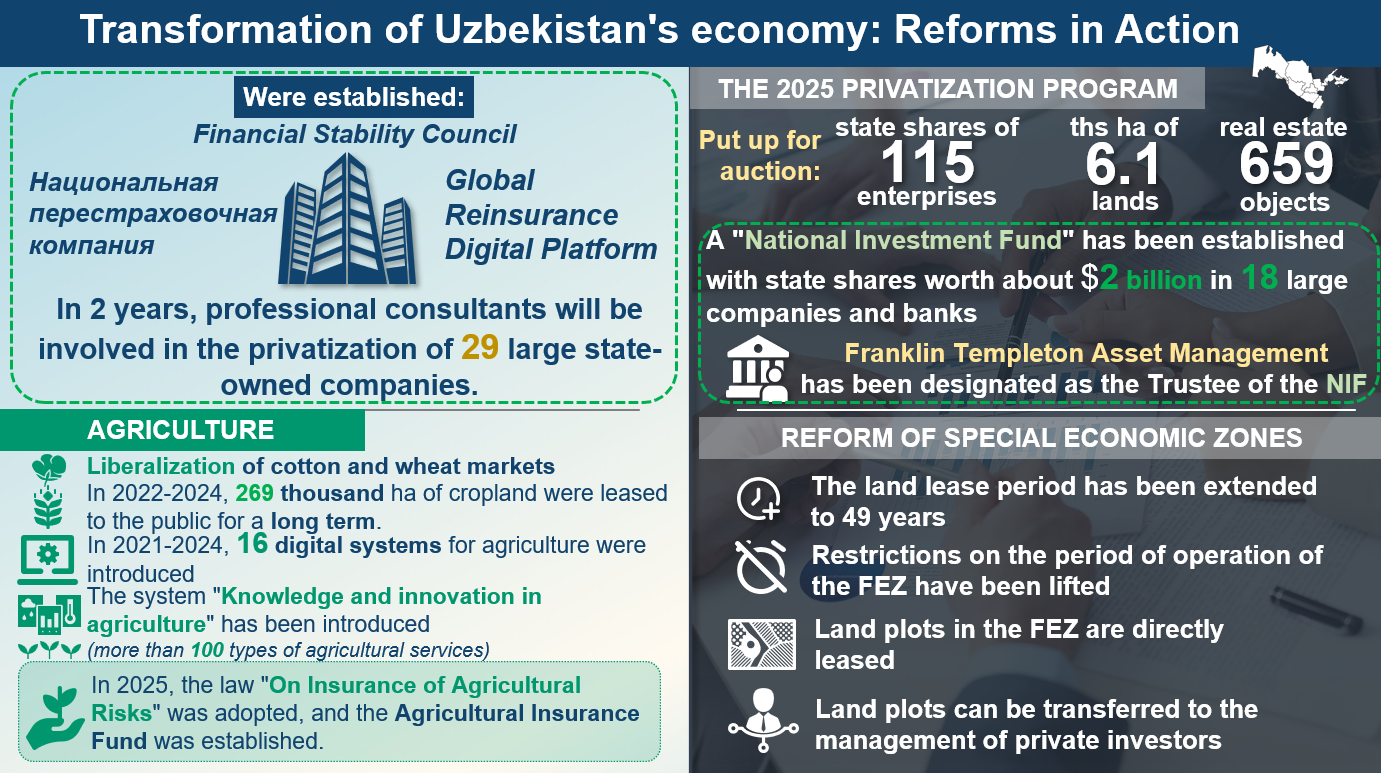
Key reforms were highlighted, including the Investment Law (2019), revised in 2024 to incorporate responsible business principles, national treatment, simplified land access (up to 49 years), and a reduced participation threshold (from 10%). Over 50 bilateral investment protection agreements and 54 double taxation avoidance treaties have been signed.
An Investment Advisory Council under the President has been established, along with the introduction of investment visas and residence permits for major investors. The number of special economic zones (SEZs) increased from 3 to 22, and PPP projects reached 366 with a combined value of $140 billion.
Energy sector reforms were also discussed. Since 2017, electricity generation has increased by 38%, and installed capacity rose by 79%, reaching 24.4 GW. By 2024, 14 solar and 3 wind power plants with a combined capacity of 4.1 GW were commissioned. By 2030, Uzbekistan plans to expand renewable capacity to 18 GW.
Uzbekistan is the first country in the region to launch a green certificate and carbon credit trading system. Emissions of harmful substances declined by 11% from 2017 to 2024, with a target of 30% reduction from 2010 levels by 2030.
The expert concluded that Uzbekistan has set ambitious national goals: to achieve a GDP of $200 billion, raise total exports to $45 billion (including $10 billion in agricultural exports), and reach $5,000 GDP per capita, transitioning into the upper-middle-income country category and enhancing investor confidence.
A special focus is being placed on increasing value-added production, with the goal of raising the share of finished goods in exports to 50%. Uzbekistan plans to cut import dependence by 50% and attract $30 billion into infrastructure, energy efficiency, and social development. Inflation and unemployment targets are to remain within 5–6%.
In conclusion, the speaker emphasized that reforms over the past eight years have laid a solid foundation for sustainable growth and integration into the global economy. WTO accession is viewed as a strategic milestone that will consolidate reform achievements, enhance competitiveness, and ensure long-term economic resilience.
He also noted that growing international trust, rising investment flows, and deepening diversification are positioning Uzbekistan as an emerging growth hub in Central Asia.
Public Relations and Media Sector
Center for Economic Research and Reforms

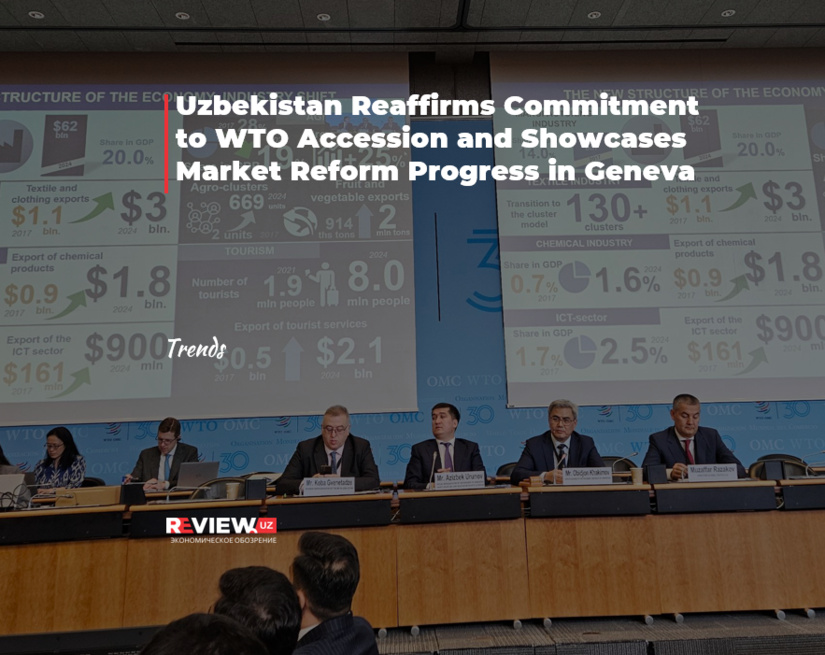
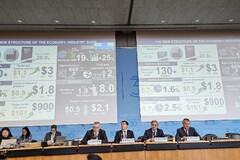
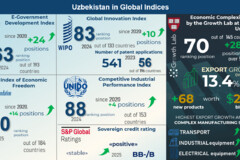




















leave a comment